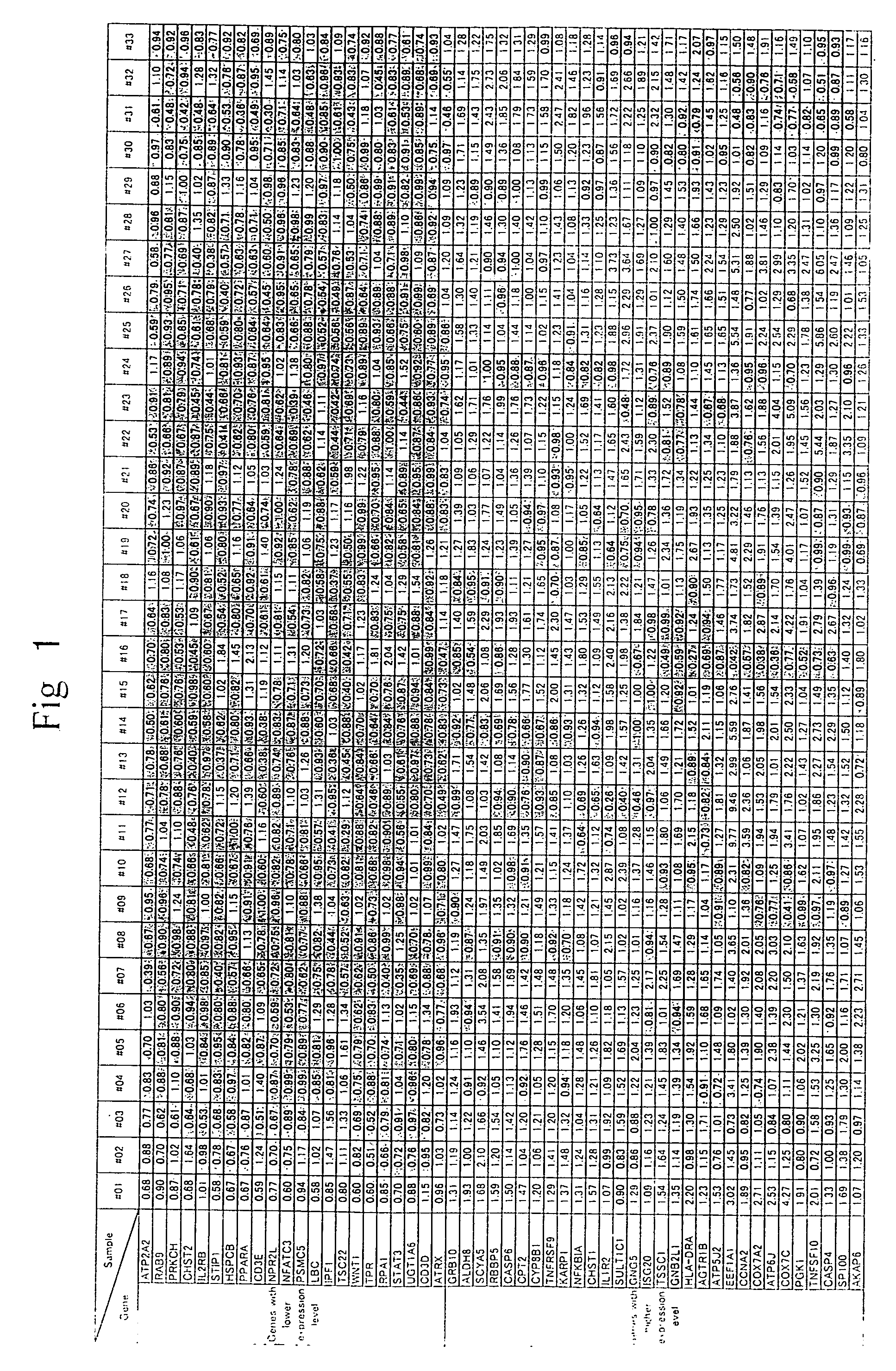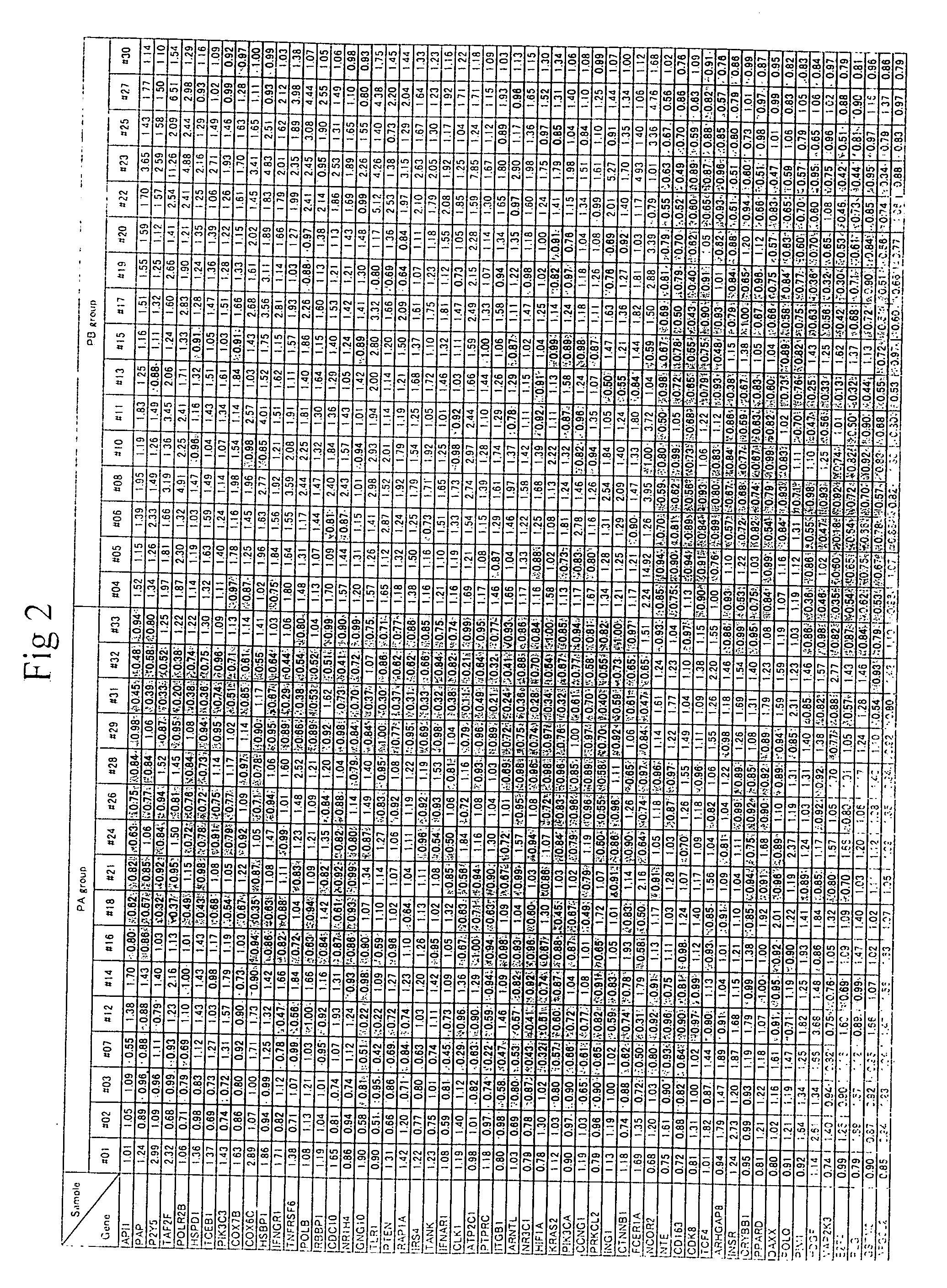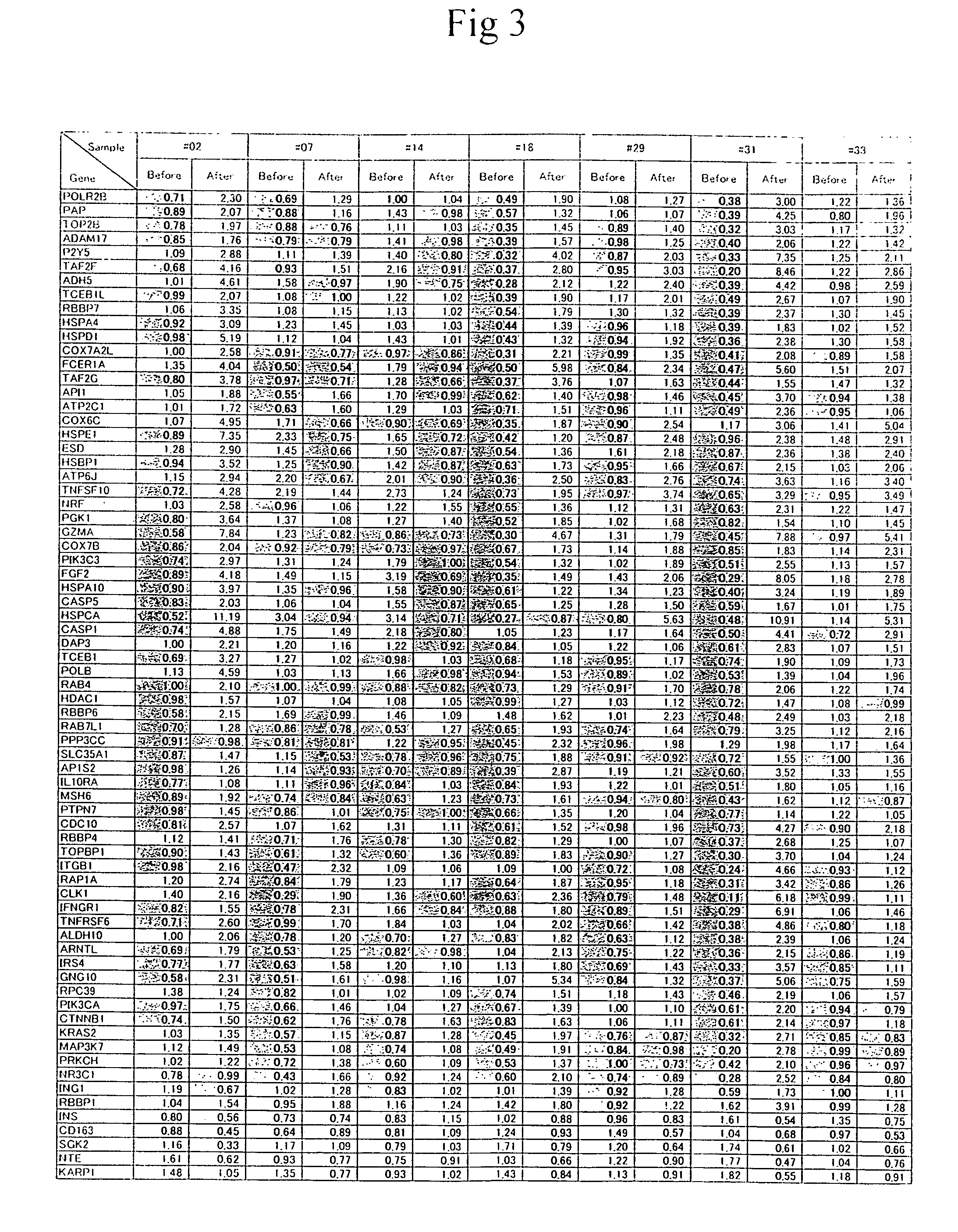Method of diagnosing depression
a depression and diagnosis technology, applied in the field of diagnosis methods, can solve the problems of serious affliction of patients mentally and physically, imposing enormous damage on their social lives, and the diagnosis of depression is, however, far from simple, and achieves the effect of simple, accurate and non-invasiv
- Summary
- Abstract
- Description
- Claims
- Application Information
AI Technical Summary
Benefits of technology
Problems solved by technology
Method used
Image
Examples
example 1
Selection of Marker Gene
1. Patients and Healthy Volunteers
[0074] Target patients were those who had agreed with the written description for participating in the research for developing the present diagnostic method selected from among untreated patients afflicted with depression who had visited the Department of Psychiatry and Neurology of the Tokushima University Hospital between November 2001 and June 2002. This research was approved by the ethics committee of Tokushima University Hospital. Diagnosis was made in accordance with a depressive episode specified in the International Classification of Diseases, 10th revision (ICD-10). Patients with serious physical complications or those taking therapeutic agents for physical diseases were excluded. Healthy volunteers with the same sex and age conditions were selected for each patient for comparison.
[0075] Thirty three patients whose samples before treatment had been obtained were 25 males and 8 females aged 23 to 74 (45.7 years ol...
example 2
Diagnosis of Depression Using Diagnostic Marker
[0088] The samples obtained from patients afflicted with depression and the samples obtained from healthy volunteers were employed to cluster the patients afflicted with depression and the healthy volunteers and to evaluate the course of treatment for the patients afflicted with depression.
1. Subjects
[0089] Three patients afflicted with depression and three healthy volunteers were employed as the subjects. Diagnosis was made in accordance with a depressive episode specified in the International Classification of Diseases, 10th revision (ICD-10). Patients with serious physical complications or those taking therapeutic agents for physical diseases were excluded. The samples obtained from 6 subjects were concealed whether they were patients afflicted with depression or healthy volunteers. Those samples were designated as Subjects A, B, C, D, E, and F.
2. Analysis of Gene Expression
[0090] Blood (5 ml) was collected from the subjects, ...
example 3
Selection of Diagnostic Marker
1. Patients and Healthy Volunteers
[0096] Target patients were those who had agreed with the written description for participating in the research for developing the present diagnostic method selected from among untreated patients afflicted with depression who had visited the Department of Psychiatry and Neurology of the Tokushima University Hospital between November 2001 and February 2004. This research was approved by the ethics committee of Tokushima University Hospital. Diagnosis was made in accordance with a depressive episode specified in the International Classification of Diseases, 10th revision (ICD-10). Patients with serious physical complications or those taking therapeutic agents for physical diseases were excluded. Healthy volunteers with the same sex and age conditions with each patient were selected for comparison.
[0097] Thirty two patients whose samples before treatment had been obtained were 20 males and 12 females aged 23 to 74 (45....
PUM
| Property | Measurement | Unit |
|---|---|---|
| Length | aaaaa | aaaaa |
| Energy | aaaaa | aaaaa |
| Atomic weight | aaaaa | aaaaa |
Abstract
Description
Claims
Application Information
 Login to View More
Login to View More - R&D
- Intellectual Property
- Life Sciences
- Materials
- Tech Scout
- Unparalleled Data Quality
- Higher Quality Content
- 60% Fewer Hallucinations
Browse by: Latest US Patents, China's latest patents, Technical Efficacy Thesaurus, Application Domain, Technology Topic, Popular Technical Reports.
© 2025 PatSnap. All rights reserved.Legal|Privacy policy|Modern Slavery Act Transparency Statement|Sitemap|About US| Contact US: help@patsnap.com



